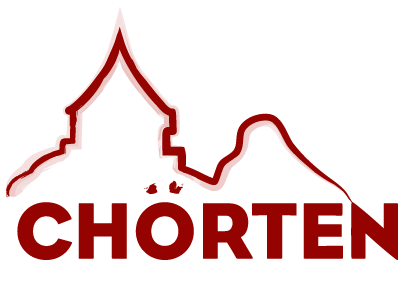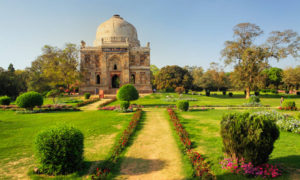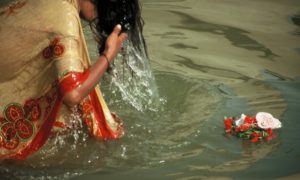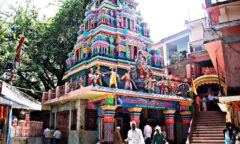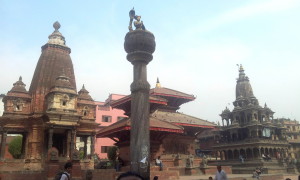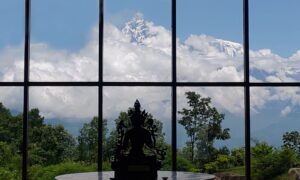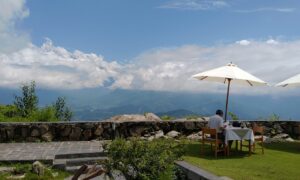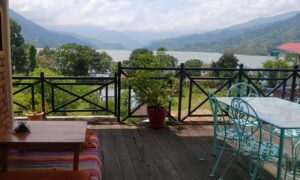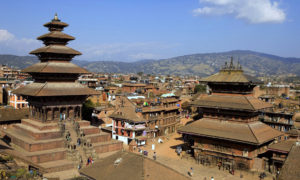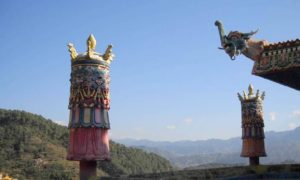
Knowledge, Experiences and Learnings in India and Nepal
with Guilherme Samel from 12 to 30 March 2023
To enlarge your map please click on the icon in the top right corner of the map
From 12 to 30 March 2023
Summary Itinerary
Detailed Itinerary
Arrival
Gurudwara bangla sahib
Lakshmi Narayan Temple
Humayun's Mausoleum
Upon your arrival, you will already be assisted by our local representatives who will be waiting with a sign with your name at the airport. We accompany the arrival of each Chörten Traveller, maintaining contact by phone with our representative team at the airport from before their arrival. Including making sure that they have already contacted the hotel, notifying them of their arrival, so that their room is available as soon as possible, according to the possibilities of the hotel on the day. As soon as you meet our representative at the airport, we will contact you by phone or Whatsapp to see if we can be of assistance in any way. The Brazilian specialist for the trip, Guilherme Samel, will already be at the hotel waiting for your arrival. Transfer to the hotel with our own vehicle, with assistance, located in a central region, with interesting possibilities for cultural tours. For those arriving on a flight in the morning, the possibility of a short walk around the hotel in the afternoon.
From the hotel, walk to visit the Sikh temple, a religion from the XNUMXth century. XVI and Punjab region in India is certainly a good option. In the beautiful Gurudwara Bangla Sahib, we will hear their chants, observe how they say their prayers inside the temple and around a sacred pool. We will also be able to visit the kitchen where volunteers offer meals to thousands of people daily, regardless of social class or religion.
Also nearby in the area of our hotel is the Hindu temple Lakshminarayan, also known as Birla (important Indian family) Mandir (temple in Hindi). We will see many Hindu temples during the trip, from the smaller ones on the sidewalks and in front of the houses, to the bigger ones, as in this case. They are opportunities to learn and reflect a little about the knowledge, wisdom and learning method that has been practiced for millennia throughout the Asian subcontinent: from the Hindus River Valley (from Mt. Kailash in Tibet to Pakistan), extending through the Gangetic Plain ( from Rishikesh to Kolkata), across the Himalayas to South India. We will take the opportunity to talk to our local guide about questions and curiosities about Hinduism, as well as to the temple goers, including the priests here. We heard different responses, under different approaches and levels of understanding of this knowledge, from the most beginners to the most accomplished, from the most popular to the most academic.
Second of the six main Mugal emperors, Humayun (1508-1556), his mausoleum was built in Delhi, the first with architecture associated with a garden and the use of red sandstone stone on this scale in India. Thus, the predecessor and of a beauty close to the Taj Mahal, some people consider this monument even more beautiful.
Old Delhi
Raj Ghat
Kartavya Path (Rajpath)
We will begin our tours with what is actually one of several Delhis, which have existed at different times and empires in a succession of neighboring cities. The last and eighth Delhi is where we stayed, built by the British, called New Delhi. The seventh was built by Shah Jahan, one of the great Mughai emperors, the same one who built the Taj Mahal, then known as Shajahanabad. Today we call it Old Delhi or Old Delhi. We will visit the great mosque of the Emperor, the Jama Masjid. In it, for those who want, there is the possibility of a walk up the minaret! From where we have a view of the city and the Red Fort from above. Talk to your guide. He doesn't need to go up. Just be very careful on the platform above, please.
Then we'll walk through the alleys of its old bazaar. There is a very old shop, passed from father to son for a long time, selling essences (sandalwood, etc.) and incense called Gulab Singh Johri Mal, which in itself is a walk. You can buy an oil in a box along with one of the very typical bottles of this Muslim region of Delhi. Following the walk through the alleys of the bazaars, most guides like to do a bicycle rickshaw. We highly recommend that you do the walking tour, to have more contact and to be able to see the bazaar better. Possibility to visit a small Jain temple, very old, with beautiful paintings. There is more than one Jain temple in the region, this one is in the village called Naughara Gali, in the Kinari bazaar. We then continue until we reach the Red Fort, where the important Lahori Gate is. It was there that important talks about the history of India took place, such as the independence of this country, today the largest democracy in the world, in which millenary values and customs coexist at the same time with extremely modern knowledge and technologies.
On the way back to our hotel area, we will pay tribute to the memorial where Gandhi was cremated, Raj Ghat. We will see what was his last word, a sign of great accomplishment on his spiritual path. Those who like photographs, look for images made by Cartier-Bresson, one of the great photographers that ever existed, who was in Delhi that day.
Close to our hotel is the esplanade built by the English in the XNUMXth century. XX, called Kartavya Path (Rajpath). In it is the India Gate, landmark of the city, built in honor of the fighters in the great war, where we can go down to take some pictures. On the other side of Kartavya Path is the home of the current President of India.
A walk around one of the parks where locals go for their walks, very beautiful, with mausoleums of the various sultans of Delhi, the Lodi Garden, is a great option that combines history, nature and the opportunity to observe the daily lives of local residents .
We will check the city's cultural agenda for the days in Delhi, as a possibility of a special activity, where great artists from the country perform.
Lotus Temple
National museum
Gandhi Smriti
South of the city, we will visit the beautiful Lotus Temple. Built in the format of its name, it belongs to the religion called Bahá'í, founded in the XNUMXth century. XIX, in ancient Persia, when visiting it we will all be invited to be silent for a moment. An interesting opportunity and experience in the middle of this big bustling city. After visiting the temple, sometimes open, ahead of the exit path (before turning right to the street gate), there are stairs that lead to an exhibition on the history and work on this religion. Interesting to take a look and get in touch with brief expositions about their thoughts.
A very interesting visit in Delhi is the National Museum. It is possible to spend many hours or days to appreciate each hall and exhibitions about the history, arts and peoples of India. A good way to take advantage of this opportunity is to visit a main hall and the relics of the Buddha. The backpack needs to be kept in an object locker before entering the museum building (small women's bags or straps are usually allowed in) and so, just before going up the entrance stairs, be sure to take a look to your left at one of the not the first charter of human rights, carved in stone, in accordance with the laws of the great Indian emperor of the 3500th century. III BC, Ashoka. Right after entering, one of the first halls is the one about Mohenjodaro and Harappa, the cradle of this Indian culture, between 1500 and XNUMX BC. C.. Right at the entrance to this hall there is a comparative interest in the times of the ancient civilizations of mankind. Then we have objects from that time, the main ones being: the seal with what must have been Shiva (possibly in the form of Pashupati), and the sculpture of the head of the priest and the dancing girl. From there, we walked (take your time, please), without stopping too much in order to use a shorter time of our day at the museum, through the other halls, until we arrived at a relic of Buddha. It is common to find practitioners of the method of this Nepalese/Indian master (Sakya), sitting in meditation around his relics. This can surely be a beneficial mental mark that we can offer ourselves for a few minutes, in that training and familiarization with the natural state of our minds, more at peace and better able to benefit a greater number of people and sentient beings (simply: beings with consciousness) in general. If you want to take a quick look at the halls of Indian tribes and the instruments on the top floor, with a lot of focus and careful time, run ;-)! Joke. But take care of your time and use of your day in this amazing city.
Another special visit for our day, is the last house where Gandhi lived, known as Birla House. We will learn a little about this important part of the history of this nation, as well as about the life and the final moment of this great leader, an example of the practice of Ahimsa (non-violence) and the culture of peace until today all over the world. Today, in the format of an interactive museum, with a collection of photographs and objects by Gandhi, called Gandhi Smriti. We probably wouldn't recommend looking at the entire museum with all the time in the world to allow time to experience the museum, Gandhi's history up close, like other important places in Delhi. A walk around the museum, looking longer at one or another part of Gandhi's life, usually works very well. Suggestion: go to the back of the house where Gandhi was assassinated on the way to the place where he said his daily prayers. Go back into Gandhi's room by visiting this floor. When going up the stairs, there are volunteers, sometimes students, available to present the museum. Experience: They can be really cool while presenting them can take a lot of time. Ask if they can come up with the 3 or 4 most important parts and then go on your own.
Flight
Walk through the Ghats
Aarti Ceremony
Today we will visit one of the oldest cities in the world that is still alive today. After breakfast, we will continue to Delhi airport for our flight to Varanasi. Transfer to our hotel and check-in. Time to freshen up in our rooms and then get to know the old part of the city through a millenary ceremony. The fire puja or Aarti Puja, conducted by brahmins (caste of Hindu priests) and hundreds of pilgrims from all over India on the banks of the sacred Ganges, is full of music, symbols, mantras, smells, a lot of devotion and, for those who study the scriptures profound and sophisticated knowledge of the workings of the human mind. Time to go back to our hotel, with all these impressions, practically the same that both Hindu saints and yogis, like Buddha Shakyamuni himself, had in this same place in their walks, training periods and teachings. A good break for a special start to the day, very early tomorrow.
Tips on the morning tour:
A suggestion to rest well that day, not ending too late, to watch the sunrise on the Ganges very early tomorrow. In addition to the possibility of beautiful light, it is when pilgrims do their pujas on the ghats that it is very nice to see from the boat. To calculate the departure time from our hotel, we use two main pieces of information: time of sunrise in Varanasi on that day (here) and how far the car can go at this time of day (varies a lot from month to month so we asked the guide) so how long will we walk (maximum 5 to 10 min). With this information:
– Sunrise time is a good time to be on the boat, that is, start a boat trip 10 to 15 minutes before sunrise.
– Are approx. 20 min by car from the hotel to the main ghat (main ghat or Dasaswamedh Ghat) at this early hour, plus walking, if any.
After sunrise we return to the hotel for breakfast and then we go to Sarnath (the hotel is already halfway there).
Ganges Sunrise
Sarnath
Aarti Ceremony
We will wake up very early to reach the Ganges before sunrise. We will board our rowing boat to go up the Ganges and witness the sunrise of the sun god, Surya, from our boat. We will observe pilgrims performing their pujas (rituals) at the beginning of their days in this most sacred place in Hindu tradition. Calmly, led by the goddess Ganga, we will return to the path we have now traveled to a ghat (staircase by the river) a little further on, where we will disembark and have the opportunity to walk through the many alleys, amid thousands of small and larger temples, of the old part of the city. There is a famous temple in this region called Golden Temple or Kashi Vishvanath. Its history is important for us to understand the different moments of India.
Back in our vehicle, we will have a good breakfast at our hotel and then continue on to Sarnath . We will pass by the place where Buddha, after his enlightenment in Bodhgaya, met his 5 fellow practitioners and then we will visit the important Deer Park. Quite peaceful place, where Buddha turned the Wheel of Dharma for the first time, that is, where he taught for the first time, approx. 2500 years ago. We will be able to do our meditation practice individually, sit for a few minutes, walk, read, photograph, as each traveller prefers. We will visit the Mahabodhi temple, Buddha's relics and a "granddaughter" tree where Buddha sat and became enlightened. A simple and always very special visit can always be visiting a school in the region. We'll talk about that possibility.
Late afternoon free, which we can enjoy in different ways. We will discuss all possibilities.
Flight
Free afternoon
After breakfast, drive to Varanasi airport for your flight to Delhi. We will have a free end of the day that each Traveller can enjoy as they prefer. We can return to some visit that we liked a lot. There are several possibilities for different visits that may be of interest. As well as bookstores, cafes, parks.
We will check the city's cultural agenda for the days in Delhi, as a possibility of a special activity, where great artists from the country perform.
Train ride
Aarti Ceremony
Early in the morning we take our train for approx. 5:40 am to Haridwar, nearest station to Rishikesh. Riding the train in India is an experience that cannot be missed and an excellent opportunity to chat with Indian families, observe the villages and fields on the way. Our local representatives will assist us with our arrival and then we will continue for approx. XNUMXmin to our hotel. After check-in and lunch we can take a walk through the Ram Jhula region. Jhulas are the suspension bridges, in this case over the Ganges, which on the other side, on its bank, we will participate in the Aarti puja conducted by students of the Parmarth Niketan ashram during sunset.
Vasistha Guha
Free time
After our breakfast, just beyond Rishikesh, we will visit the cave of a Vedic sage, one of the great seven Rishis of India, named Vashistha. It is always a very special experience to be able to pay tribute to the great yogis, to sit in the same place where he lived and meditated during the winters. We can also walk along the beach next door, on the bank of the Ganges. These are very suitable and pleasant places for meditation practices and reading texts.
We return to the region of jhulas (suspension bridges) for our lunch and walk through the alleys of the region, visiting its small temples, cafes and bookstores.
An extra activity option for that day is a special rafting tour along the (in this very clean) waters of the Ganges after visiting Vashistha Guha.
Shree Neelkanth Mahadev Temple
Swami Dayananda Ashram
Free time
Today we will visit a very special temple located approx. 40min from Rishikesh, called Shree Neelkanth Mahadev. It will be another good opportunity to see the customs of the Hindu tradition up close.
Back in Rishikesh, we will be able to visit an important center of Vedanta study, Swami Dayananda's ashram. If you feel up to it, you can walk back to Ram Jhula along the Ganges bank, and at the end of the day, participate in one of the pujas in the ashram temple, overlooking the Ganges.
Free time to walk, enjoy, enjoy and contemplate this very special place that is Rishikesh.
Kunjapuri temple
Free time
Today we will climb the Himalayas with our vehicle for approx. 40min to a temple on top of a mountain, at 1676m altitude. The Kunjapuri temple is dedicated to the goddess Durga and is one of the 13 places of power (Shakti Peethas) in this region. If the weather is clear, we will have a beautiful view with the snowy mountains in the background. Remember that the snow line here in the Himalayas is at an altitude of 5500m.
End of the day at leisure to enjoy Rishikesh. Suggestion: we can take a walk from Ram Jhula to Lakshman Jhula along a small road on the other side of the Ganges. Where then we can, for example, have lunch and then take a tuctuc or walk back.
Flights
boudhnath
Welcome to Nepal! From the airport runway, weather permitting, it is already possible to see the mountains around the valley. With your visa and suitcase in hand, a procedure facilitated by Guilherme who will be accompanying the group since the main program, we will be greeted by our local representative and driver who will be waiting for us with a Chörten license plate.
We will stay in the Tibetan quarter, Boudhnath. After check-in at our hotel, we will go for a walk around the big stupa (tib: chörten)from Boudhanath in our Tibetan neighborhood, full of monasteries, you will find secular nuns, monks and Tibetans, sometimes great masters, doing their koras (circumumbulations), spinning the famous prayer wheels with millions of Om Mani Padma Hungs, reciting mantras and lighting lamps mainly in the late afternoon and early morning. We will have dinner in one of the restaurants around the stupa, where we will be able to observe and assimilate a little of this ancient culture.
Swayambunath
Kathmandu Durbar Square
Thamel
We will start our visits with a short walk in the region of the second largest stupa in the valley, Swayambunath (translation: self-emerged). Legend has it that the hill where the stupa is located appeared at the place where the bodhisattva Manjushri, the bodhisattva of wisdom, picked up a lotus flower after emptying the lake in what is now the Kathmandu Valley. We will have a view of the whole city, we will do our koras around the stupa and we will know its small monasteries.
From Swayambu we will continue to Kathmandu's Durbar Square (Palace Square) where a small living goddess, Kumari, lives. The durbar squares of the Kathmandu Valley were built by heir kings of the Malla dynasty, XNUMXth century. XII to XVIII, which, in this case, luckily for us, competed in architectural beauty. There are numerous temples of the various Hindu gods around the palace. We will then walk to the travellers' quarter in Kathmandu, Thamel, with countless good restaurants, mountaineering shops, Nepalese crafts, bookstores, for a good meal and, if anyone needs, buy some clothes, for example, for trekking or future trips.
After lunch and visits, we return to our Tibetan neighborhood.
boudhnath
Patan
Next to our hotel, we will start by visiting the monastery of Dudjom Rinpoche, called Dudjom Gompa. Dudjom Rinpoche was a great master, master of many masters. There are many very special books with his teachings and his lineage. His (shrunken) body is in the stupa in his monastery. It's worth sitting there for a while.
We will continue to the monastery of Chökyi Nyima Rinpoche, called Ka-Nying Shedrub Ling. One of the oldest if not the oldest in Boudha, built by Tulky Urgyen Rinpoche and his eldest sons at the request of SS the XVI Karmapa. Known as the white monastery, it has a college for both monks (10 years) and westerners (www.ryi.org) with bachelor's, master's and shorter courses. The Rangjung Yeshe Institute library is worth visiting. We will also visit the monastery of Matthieu Ricard, Rabjam Rinpoche and Dilgo Khyentse Rinpoche, called Shechen. See if Dilgo Khyentse Rinpoche's room is open. Another very special place to sit for a while.
The Sakya monastery of Trinchen Rinpoche in the kora of the great stupa of Boudhnath has a beautiful statue of Maitreya. Having seen the main monasteries of Kathmandu, you can return to them to participate in the pujas (monks' ceremonies) in which we can sit for as long as we like, use their libraries and bookshops. More here
At the end of this morning, we will continue to the friendly Durbar Square of Patan, very famous for its artists and beautiful temples. There we will visit a small, very well done and very didactic museum of Hindu and Buddhist art. Nearby, we will visit the small and beautiful Golden Temple, used until today by Buddhist Nepalese from the same ethnic group as Sakyamuni Buddha himself.. Patan has a good option for our lunch, it is an excellent place to buy Buddhist statues (as in Boudha too), of excellent quality, as well as to walk through these medieval streets and their temples.
kopan
And Pashupatinath for the Hindus
End of free day
Today we will visit some of the main monasteries of the Kathmandu Valley, having good opportunities to learn a little about the projects of their great masters. First we will try to visit Kopan. 'We will try' because it has been common to have retreats and on those days they are not open to visitors. Still, it is always possible to try the following way: calling or going to the Kopan (15 to 20 min by car from Boudhnath), if they are on retreat, demonstrating that they understand the importance of silence for the retreatants and, thus, asking if they can visit the stupas in silence (whenever we are close to the refugees). It is the monastery of Lama Yeshe and Lama Zopa Rinpoche, where a few hundred monks of all ages live. It is an important center of study for Sherpas, often from the Everest region, and foreigners from around the world.
Then we will take a walk through the Pashupatinath temple complex, which is located around the Bagmati River, sacred to Hindus. In addition to the main temple, dedicated to the quieter manifestation of Shiva, Pashupati, there are dozens of smaller temples also dedicated to the god of destruction and reconstruction of Hinduism. It is also the place where Nepalis who can are cremated to ensure good passage or release (moksha).
End of the day at leisure to enjoy more time in the regions that we liked the most so far, with their cafes, as well as with the activities of the locals, of so many different ethnic groups.
Flight
Walk
We will fly to a very beautiful region, around Lake Phewa, very close to the snowy mountains of the Himalayas. In addition to enjoying this afternoon in peaceful Pokhara, we will sleep for the next two days next to the Machapuchare and Annapurnas mountains. Tomorrow we will take a beautiful hike to close our trip in a very special way.
Walk
Free afternoon
In the morning, we'll drive to a region where we'll hike through the Himalayas. Who prefers to do our walk for approx. 40min, you are very welcome to do it for that time and then enjoy this very special place, having tea, with an incredible view, a good book, photos, in case the group takes the walk for a little longer. Who wants to walk for 2, 3 or even 4 hours in total, we will also have these possibilities for each Traveller to enjoy in the way they prefer. We will meet at the end of the trek to head back to Pokhara. End of the day with a nice dinner overlooking Phewa Lake, thus concluding our trip.
Flight
Lovely flight back to Kathmandu. We will have that end of the day and the next day free to enjoy Kathmandu as each Traveller prefers. We can return to some visit that we like the most, we can organize visits to other regions according to the interest of the Travellers after having known most of the valley. We can take advantage of the monasteries, their libraries, maybe a conversation with a lama (teacher). We will talk and think about the best for each of the group.
Free day
Free day that we can enjoy as explained above. When we have a domestic flight it is important to have an extra day for our international flight. It is a day always welcomed by travellers!
Free day that we can enjoy as explained above. When we have a domestic flight it is important to have an extra day for our international flight. It is a day always welcomed by travellers!
international flight
We hope that you have had significant experiences and important lessons for our lives in Brazil. Transfer to the airport for the international flight.
